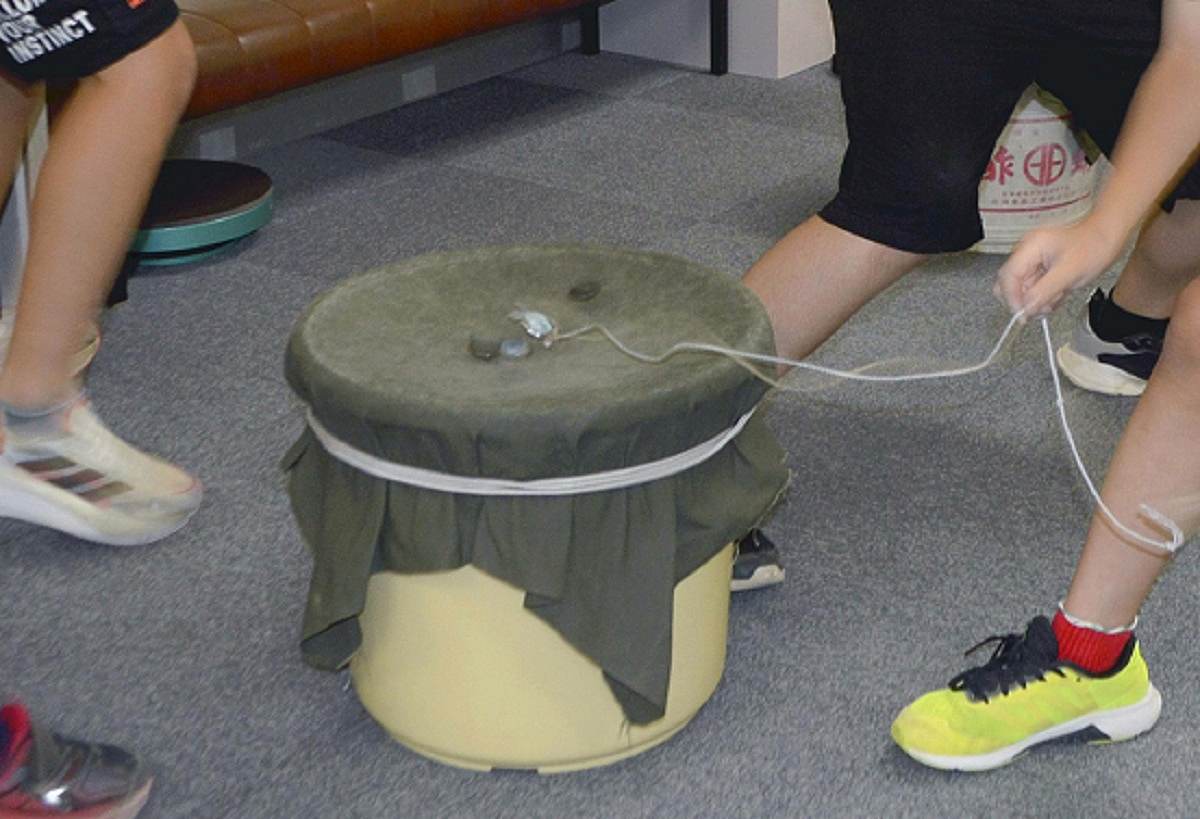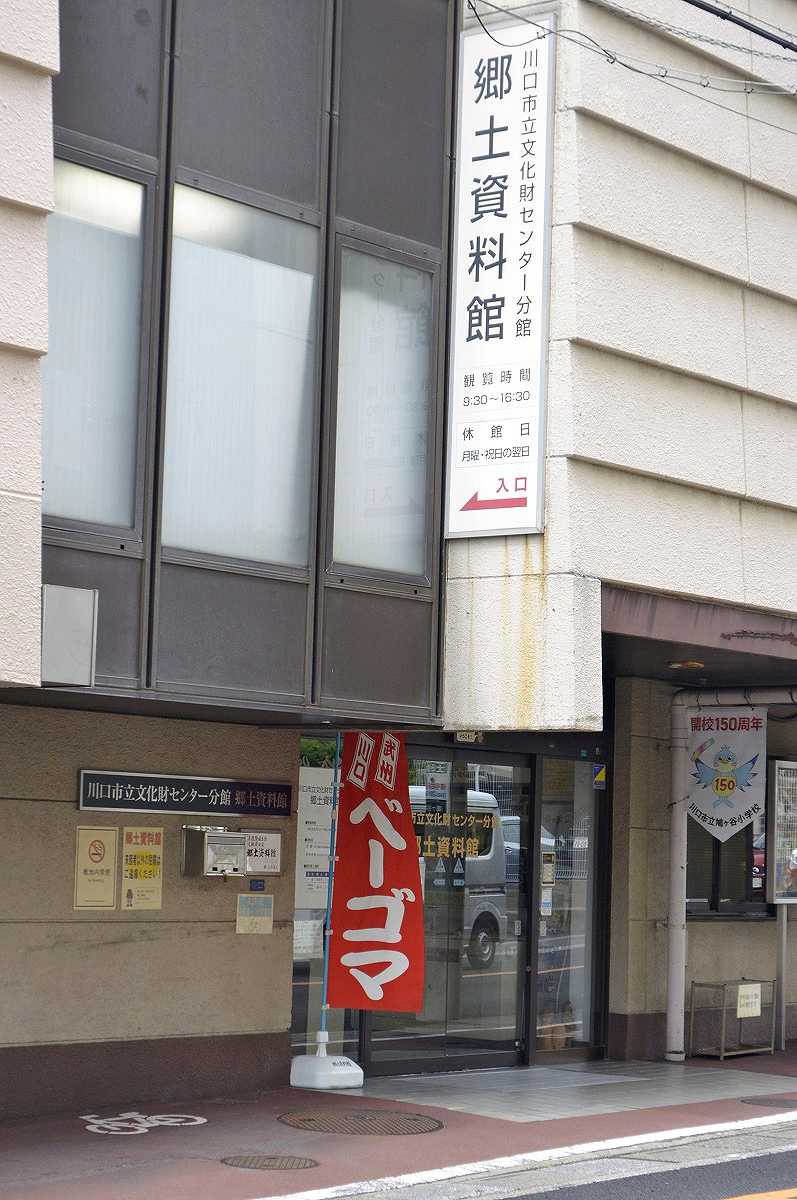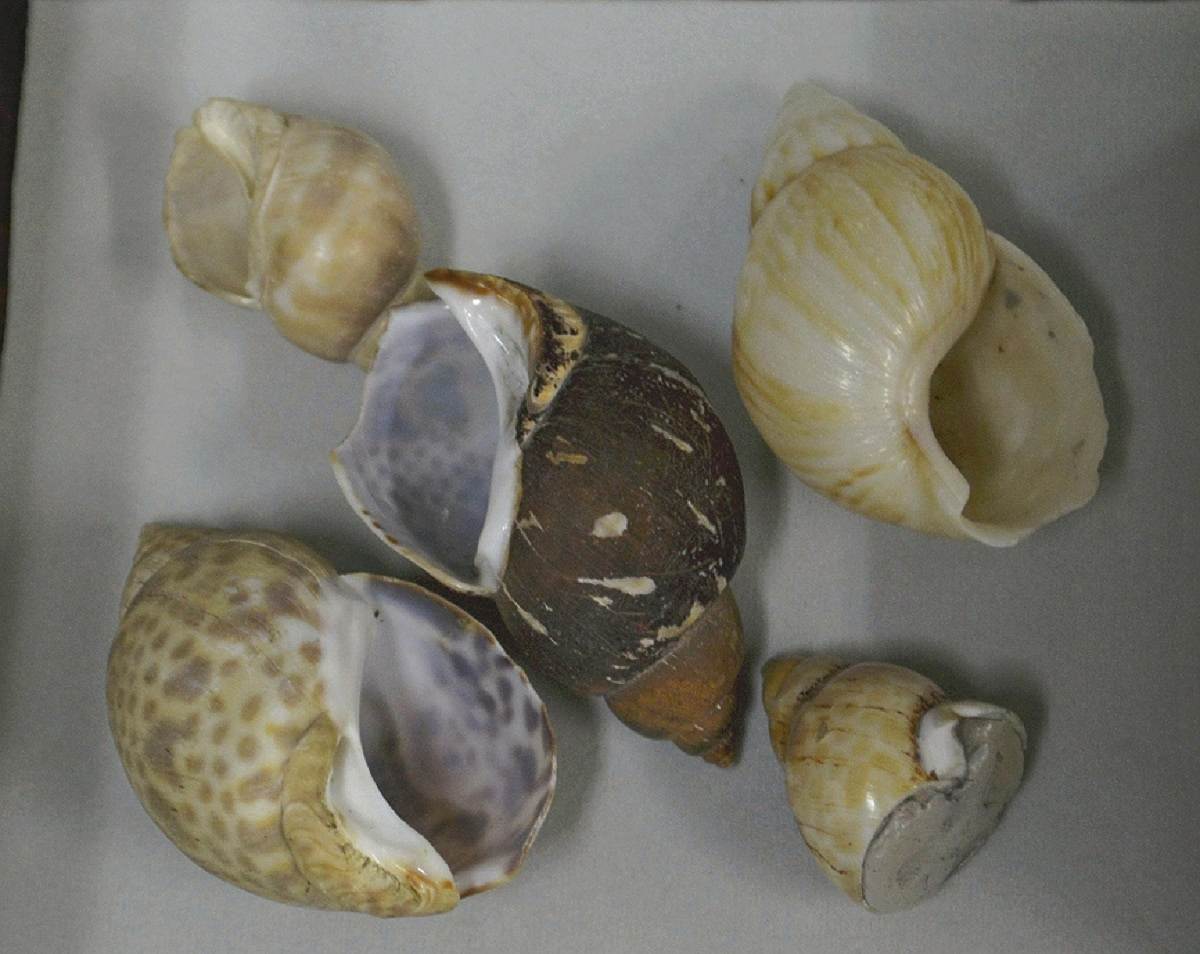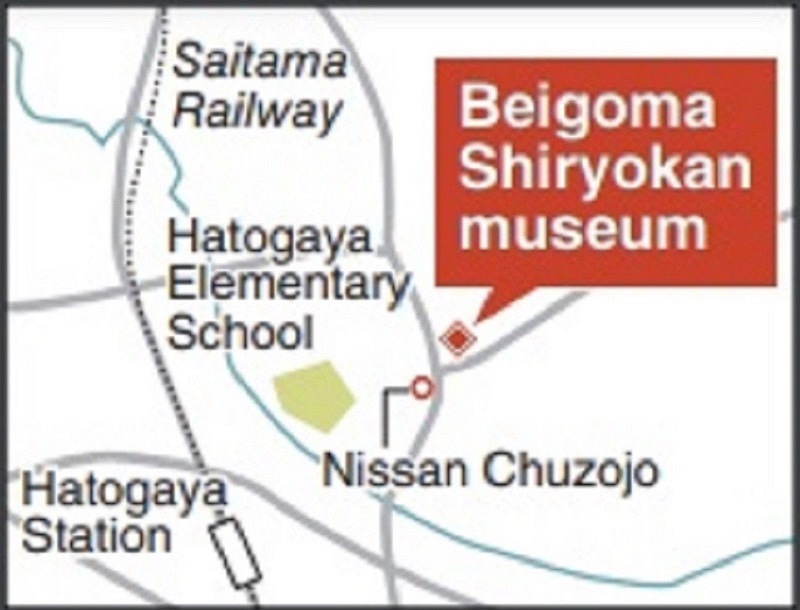
Children gather after school to enjoy a game with beigoma tops at the Beigoma Shiryokan museum in Kawaguchi, Saitama Prefecture.
13:33 JST, September 4, 2023
“Ready? One, two, three!”
Beigoma tops, made of steel with diameters of about 3 centimeters, spin after being released onto a platform called a “toko,” sometimes emitting sparks as they collide with each other. The winning top is the one that pushes out all the other pieces, or the one that keeps spinning until the end.
At the Beigoma Shiryokan museum in Kawaguchi, Saitama Prefecture, a city known for its foundry industry, local elementary school students gather to play beigoma.

The Beigoma Shiryokan is located on the third floor of the Kawaguchi City Cultural Properties Center in Kawaguchi, Saitama Prefecture.
Children in downtown Tokyo began playing the game around the end of the Taisho era (1912-1926), and it became very popular through the postwar period in the 1950s and 1960s. It is said to have its origins in the Heian period (794-1185), when a baigai, a Japanese ivory shell, was stuffed with sand and spun on a string. The name “baigoma” — which combined the name of the shell with “koma” (spinning top) — apparently became “beigoma” after it was introduced to the Kanto region.

Baigai, Japanese ivory shells, said to be the origin of beigoma
The museum exhibits rare types of beigoma, including ones shaped like an ochoko sake cup that were produced in the Taisho era, and ceramic ones made during wartime when iron was in short supply. Beigoma inscribed with the names of baseball stars were particularly eye-catching, such as “Oh” (Sadaharu Oh), and “Nagashima” (Shigeo Nagashima). It is said that Nagashima was more popular among children because the kanji had more strokes, making the top heavier and therefore making it easier to win.

The surnames of baseball stars, Sadaharu Oh, left, and Shigeo Nagashima, are seen engraved on a pair of beigoma tops.
The museum was originally opened on the premises of the city’s Nissan Chuzojo, a foundry specializing in the production of beigoma, in 2009. However, due to the novel coronavirus pandemic, the company moved to a smaller office and the museum was at risk of closure.
Eventually, in 2022, the museum was donated to the city’s Board of Education and reopened in the Kawaguchi City Cultural Properties Center.
“Beigoma is not something to just look at, but to play with,” said Yuji Ide, a member of staff from the city’s Board of Education, who supported the relocation at that time. “A space for children to play with the tops was indispensable for the museum.”
The city made efforts to promote the game, such as by setting aside time to teach beigoma games in elementary schools. Children who learned about the appeal of the game then began to visit the museum.
Beigoma used to be thought of as a boy’s game in the past. However, children today, regardless of gender, play against each other with shouts of joy. The mix of a retro game with new players can be seen at the museum.

Beigoma Shiryokan museum
Address: 2-1-22 Hatogaya-Honcho, Kawaguchi, Saitama Prefecture
Access: A 10-minute walk from Hatogaya Station on the Saitama Railway
Hours: 9:30 a.m. to 4:30 p.m. Closed on Mondays. Admission is ¥100; ¥50 for elementary and junior high school students.
Memo: Beigoma can be purchased at nearby Nissan Chuzojo.
Related Tags
"Features" POPULAR ARTICLE
-

Sanrio to Open Museum in Yamanashi Pref. Dedicated to Founder, Exhibits Include Hello Kitty, Other Characters
-

Autumn Foliage Surrounds Visitors to Tokyo’s Showa Kinen Park
-

My Daughter No Longer Speaks to Me, But I Want to See Her and My Grandchild
-

Kumamoto: Public Bath Refurbished as Library Where You Can Chat, Take Photos
-

Frozen Vegetables: Demand Rises for Convenient, Tasty Domestic Produce
JN ACCESS RANKING
-

Tokyo Economic Security Forum to Hold Inaugural Meeting Amid Tense Global Environment
-

Keidanren Chairman Yoshinobu Tsutsui Visits Kashiwazaki-Kariwa Nuclear Power Plant; Inspects New Emergency Safety System
-

Imports of Rare Earths from China Facing Delays, May Be Caused by Deterioration of Japan-China Relations
-

University of Tokyo Professor Discusses Japanese Economic Security in Interview Ahead of Forum
-

Japan Pulls out of Vietnam Nuclear Project, Complicating Hanoi’s Power Plans



























